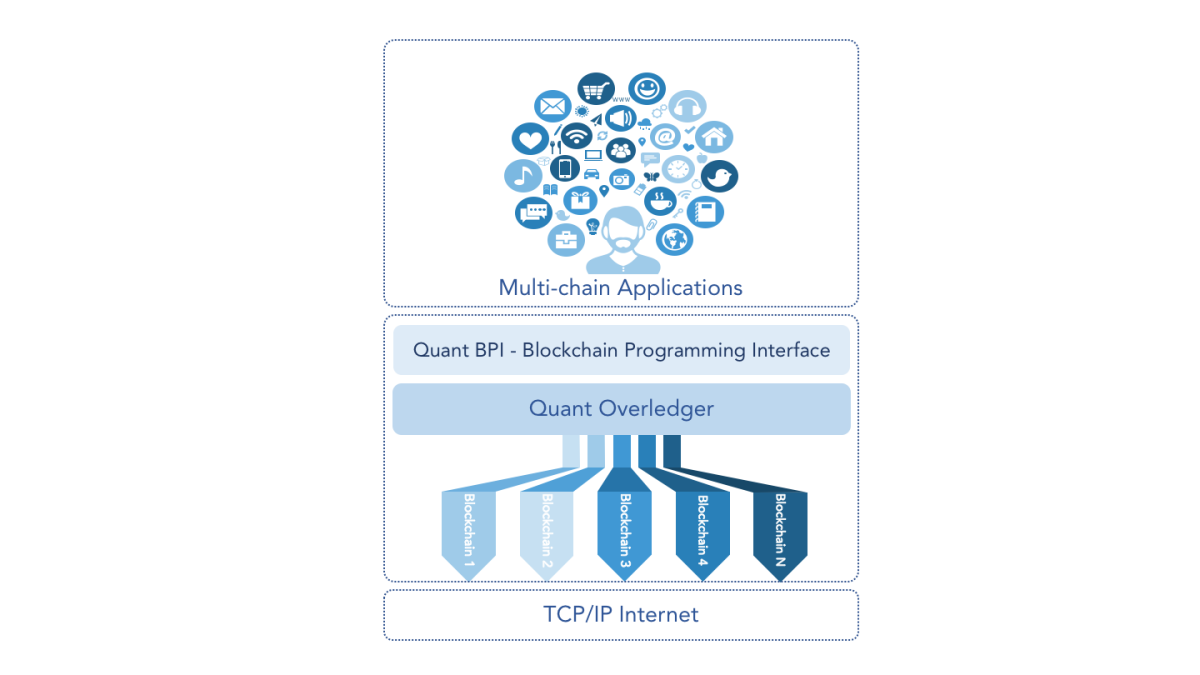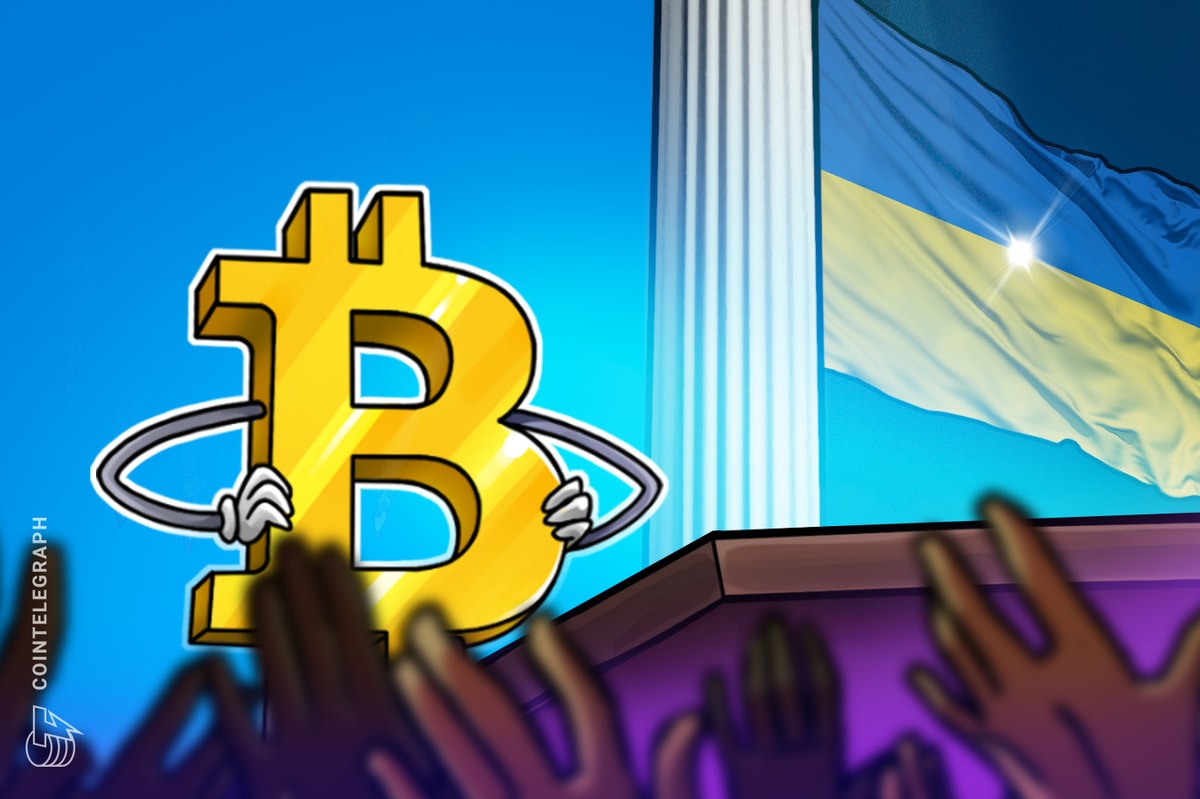
Last month, science and technology magazine New Scientist covered the Overledger project in a story titled, “The Blockchain to Fix All Blockchains.” The story emphasizes the need for data interoperability technology across different blockchains that could play a role similar to TCP/IP, which enabled the internet to thrive.
“[Overledger] seems to be a straightforward extension of the original atomic swap idea,” said Cornell University cryptocurrency expert Emin Gun Sirer, as reported by New Scientist. But instead of only supporting currencies as atomic swaps do, the Overledger works for any data that can be put on the blockchain.

The Quant Overledger project is just coming out of stealth mode. In conversation with Bitcoin MagazineGilbert Verdian, CEO and co-founder of Quant Network, confirmed that a patent for Overledger technology was filed in the first week of December.
"The uniqueness of our operating system is that Overledger is not another blockchain,” Quant Chief Strategist and Executive Director of the UCL Centre for Blockchain Technology at University College London, Paolo Tasca, told Bitcoin Magazine. “We do not impose new consensus mechanisms, new gateways, adapters or special validating nodes on top of existing blockchains. Overledger is a virtual blockchain that links existing blockchains and allows developers to build multi-chain applications (or in other terms blockchain-agnostic applications)."
According to Verdian, blockchain technology needs to enable next generation applications to function across multiple blockchains, not be limited to any single a vendor or technology and allow seamless communication across multiple blockchains as well as recognition of transactions and assets across blockchains.
As such, Quant is focussing on three goals: developing an API to connect the world’s networks to multiple blockchains; bridging existing networks (e.g financial services) to new blockchains; and developing a new Blockchain Operating System with a protocol and a platform to create next-generation, multi-chain applications.
Promoting the Blockchain ISO Standard
Verdian initiated the development of Blockchain ISO Standard TC 307, which will allow for interoperability, governance and reference architecture of blockchain technologies to work between blockchains as well as allowing blockchain networks to interoperate with existing systems and networks in use today.
Currently, there are 40 countries and organizations, such as the European Commission, working on developing the Blockchain ISO Standard, and the timeline is to have a published Standard in 2020, Verdian explained.
“Establishing blockchain standards will position ISO as a leading contributor to develop global solutions to facilitate data movement and information flows, thus enabling more efficient and timely transactions,” Verdian told Bitcoin Magazine. “There is no one blockchain standard or protocol currently in use. International standards will allow for interoperability and implementation and use of multiple blockchain-related protocols.”
“Quant Overledger will be compatible to the Blockchain ISO Standard when it is released, allowing a gateway to ‘talk’ a common language to other networks and existing systems such as financial services networks,” continued Verdian. “The entry and exit points of Overledger will be compatible to the ISO Standard, which any other technology vendor can also implement in future.”
Benefits of Interoperability
Verdian added that the widespread adoption and use of international blockchain standards could facilitate a new wave of innovation, productivity, employment and industry opportunities. For example, the growing burden of KYC compliance could be reduced through the development of international blockchain standards which utilize shared databases for undertaking business and transacting payments.
The development of international standards to support smart contracts has the potential to decrease contracting, compliance and enforcement provision costs. Similarly, the development of international blockchain standards could reduce transaction costs for SMEs when dealing with governments and businesses.
“Quant will completely change how people will be able to interact with blockchains in a way that’s not possible today,” concluded Verdian. “A good example is the recognition of a person’s identity by one entity on a blockchain will be recognized and understood by every other blockchain and every entity connected to those.”
Dapp Development
There are plans for a Quant App Store that will allow developers and startups to create multi-chain applications on top of Overledger and monetize their applications in unique ways, without having to rely on capabilities of only one blockchain.
“As a company, we’re also planning to release distributed applications on top of Quant in the areas of RegTech, FinTech and HealthTech,” Verdian told Bitcoin Magazine, adding by allowing businesses to directly interact with multiple blockchains, they will be better able to cope with the modern supply chain complexities.
In a pre-ICO (Initial Coin Offering) in January, followed by an ICO in February, Quant will sell Quant Tokens that will allow users to access the Quant network. Developers will be able to publish distributed apps on the Quant store and optionally monetize their apps by charging usage fees in Quant Tokens, for example.
Quant plans to release the first versions of Overledger in Q1 2018 and finalize the SDK and libraries in Q3 2018. This will be an open source and freely available software release that developers and enterprises will be able to use for creating next generation multi-chain applications. Then, Quant plans to release the Quant App Store at the end of 2018 for developers to publish their apps and earn Quant tokens.
Image courtesy of Quant Project










